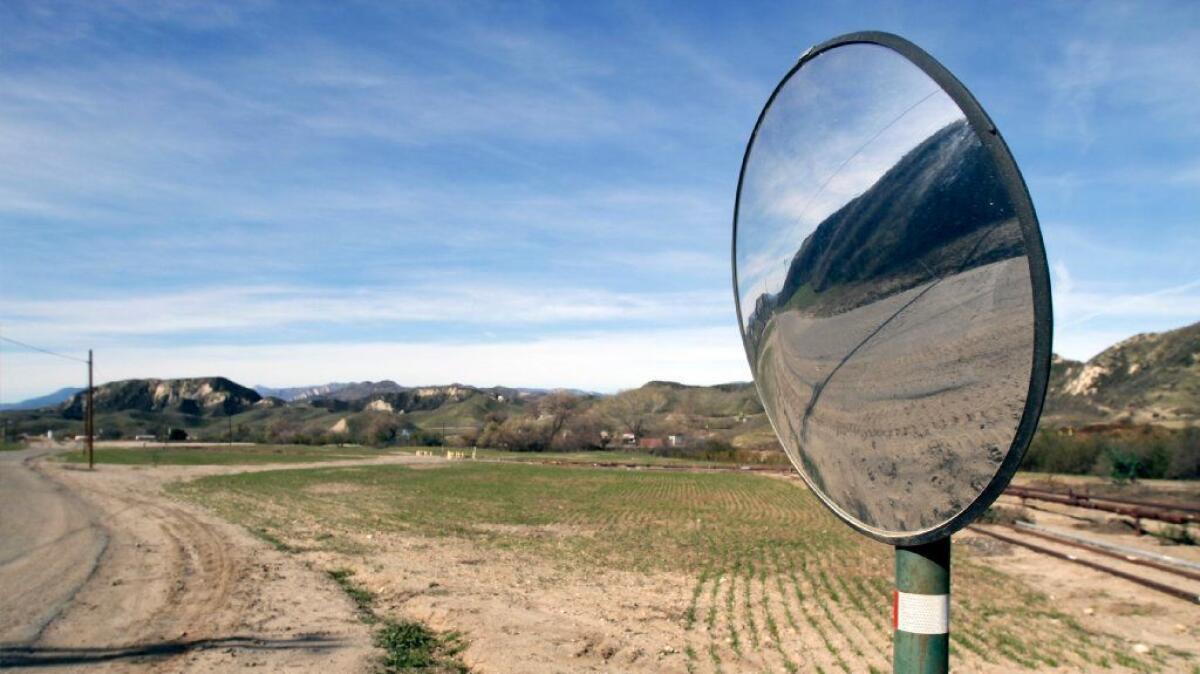State officials clear a roadblock to the controversial Newhall Ranch development

- Share via
A decades-long fight by real estate and construction industry interests to build a 58,000-resident housing development along the last wild river in Southern California overcame a hurdle this week when state wildlife officials approved the project’s revised plans to protect a rare fish and reduce greenhouse gases.
The California Department of Fish and Wildlife on Wednesday certified Newhall Ranch’s environmental impact report after reviewing modifications made to mitigate concerns raised by the California Supreme Court. The court rejected a version of the document in 2015.
The changes include measures to offset 100% of the greenhouse emissions the development will generate by dictating that houses, commercial buildings and public facilities have solar panels. The new plan also would require that up to 21,000 homes have electric vehicle charging stations — with subsidies offered to purchase electric vehicles.
A key sticking point for environmentalists has been the threat the development posed for a rare species that lives in the Santa Clara River, the unarmored threespine stickleback fish.
In the new report, Newhall Ranch has proposed methods for building bridges and bank stabilization infrastructure that it says will avoid all water contact during their construction.
State wildlife officials said these changes eliminated the need for controversial protection measures such as trapping and relocating the small, prehistoric-looking fish, a native species protected under state and federal law.
Emile Haddad, chief executive officer of Five Point Holdings, which is developing Newhall Ranch, welcomed the state’s action as an important step toward beginning construction as early as next year.
Next month, he said, the company is expected to go before the Los Angeles County Board of Supervisors for certification of tract maps for its first two villages, Landmark and Mission.
Critics of the project have long decried it as the sort of inefficient, traffic and pollution-generating sprawl that gives Southern California a bad name with regional planners.
On Thursday, environmentalists expressed mixed feelings about the state’s action.
“We’re not ready to green-light this project yet,” said John Buse, an attorney for the Center for Biological Diversity, one of the groups that has sued the state and the developer. “But there are some good things in the environmental report now that weren’t there before we took them to court.”
Developers, he said, are now required to deal with at least some of the future project’s contributions to the potentially catastrophic problem of global climate change.
“Beyond that, Newhall had to scrap its plans to basically evict sticklebacks in the Santa Clara River, and that’s a good thing,” he said.
Lynne Plambeck, president of the Santa Clarita Organization for Planning and the Environment, was more blunt.
“The California Department of Fish and Wildlife let us down,” Plambeck said. “We’re tired after fighting this thing for more than 20 years on behalf of the public and creatures, but we’re not giving up.”
The planned community in the Santa Clarita Valley, about 40 miles northwest of Los Angeles, will be built in stages, and at completion will house 58,000 people and offer stores, golf courses, schools and recreational centers on nearly 12,000 acres along the Santa Clara River.
The developer says the project will ultimately create an estimated 60,000 permanent jobs and generate $388 million in annual property tax revenue.
More to Read
Sign up for Essential California
The most important California stories and recommendations in your inbox every morning.
You may occasionally receive promotional content from the Los Angeles Times.














